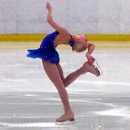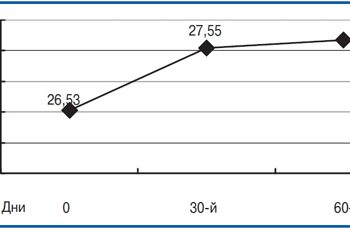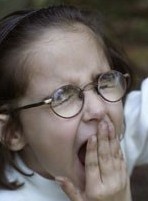Anomaly of Kiaari is a hernia of the lower brain department. In this disease, the cerebellum penetration occurs in the cerebrospinal channel. Surgical treatment of kiari anomalies is based on the dissection of the terminal thread of the spinal cord.
Content
The concept of abnormal kiari
 Anomaly of Arnold Kiaari, or Kiaari 1, described over a hundred years ago, mainly is a herniation of the lower brain department, in which the cerebellum penetration (penetration) is prolapping in the spinal channel through the hole in the occipital bone. Kiari Anomalies 2 and 3 types explain the fact that the spinal cord is shifted down under the action of other spinal abnormalities - myelheningocele and others. With anomaly of Kiari 1, at that time, when this classification was created, there were no malformations (deviations from normal development), therefore its causes are associated with a violation of the circulation of the spinal fluid or the small size of the cavity in which the cerebellum is concluded.
Anomaly of Arnold Kiaari, or Kiaari 1, described over a hundred years ago, mainly is a herniation of the lower brain department, in which the cerebellum penetration (penetration) is prolapping in the spinal channel through the hole in the occipital bone. Kiari Anomalies 2 and 3 types explain the fact that the spinal cord is shifted down under the action of other spinal abnormalities - myelheningocele and others. With anomaly of Kiari 1, at that time, when this classification was created, there were no malformations (deviations from normal development), therefore its causes are associated with a violation of the circulation of the spinal fluid or the small size of the cavity in which the cerebellum is concluded.
More than 30 years of research scientists managed to identify the cause of Kiari anomalies 1. It is also caused by deformation, which was not previously noticed. The tension of the terminal thread of the spinal cord pulls the spinal cord down the spinal channel in the same way as it happens when kiaari anomalies 2 and 3 types.
On the fifth month of the development of the embryo of his spinal cord and the vertebral pillar of the same length, after which the vertebral pillar begins to grow, and in a mature person by about 20 cm exceeds the length of the spinal cord. Between the vertebral post and the spinal cord there is a bunch, which is called the terminal thread of the spinal cord. Already 50 years ago it was described that some people have this bunch can cause a spinal cord shift, similar to what is caused by myelheningocela with kiaari anomalies 2 and 3 types.
The terminal thread of the spinal cord is formed by the battle of spinal costers attached to the bottom of the spine canal. Starting with the fifth week of the life of the embryo, these shells are growing among themselves and with the atrophied end of the spinal cord, corresponding to a rudimentary tail. In an adult person, the end thread does not fulfill any function.
The tension of the terminal thread gives rise to the spinal column a bending reflex and to avoid the spinal cord voltage causes the lower brain department, the so-called brazhelock almonds, go down the occipital hole through which the cranial box is reported to the vertebral post. This causes anomaly of Arnold Kiaari - the disease described 100 years ago, the reason for which still remains unknown.
With anomalia Arnold Kiaari dissection of the terminal thread allows you to remove the voltage at the bottom of the cerebellum almonds and reduce the lesions associated with it that ache. Surgical intervention leads to the fact that many symptoms of this disease become not so pronounced, but the almonds of the cerebellum do not rise up, as they deformed and not enough elastic.
Consequences of the disease
The tension of the end thread causes not only the brain displacement and the dying of the central part of the spinal cord, but also generates a bending reflex in the spinal column, aimed at reducing the spinal cord voltage, resulting in curvature of the spinal column - scoliosis.
The dissection of the terminal thread of the spinal cord removes the bending reflex in the spinal column and delays the development of scoliosis.
Surgical treatment of kiaari anomaly
Now simply dissemination of this bundle, called the terminal thread of the spinal cord, can be interrupted by a tension created in the spinal cord. As a result, the bottom department of the brain, not experiencing the impact of this force, does not fall into the upper part of the spine canal.
If the human brain had plasticity and the elasticity of the spring or was rubber, then the almonds of the cerebellum and the cerebellum himself would return to normal. But the brain was formed under the action of a great power of tension. After release, its restoration depends on the degree of plasticity, on which, in turn, affect the age, genetic features, as well as how long and intense was the impact under the brain.
The symptoms of the anomalies of Arnold Kiaari 1 are associated with the lesion of the brain tissue, experiencing the effect of the tension force and pinched in the occipital hole. In case of dissection of the terminal thread, despite the fact that the ultrasound does not show any significant change in the location of the protruding part of the brain, the spinal cord stops pulling the lower brain department and the compression force decreases in the occipital opening. In the affected area, hyperemia decreases and blood supply is improved, respectively, and symptoms associated with blood circulation disorders.









